 W
WThe term fish processing refers to the processes associated with fish and fish products between the time fish are caught or harvested, and the time the final product is delivered to the customer. Although the term refers specifically to fish, in practice it is extended to cover any aquatic organisms harvested for commercial purposes, whether caught in wild fisheries or harvested from aquaculture or fish farming.
 W
WThe Arbroath smokie is a type of smoked haddock, and is a speciality of the town of Arbroath in Angus, Scotland.
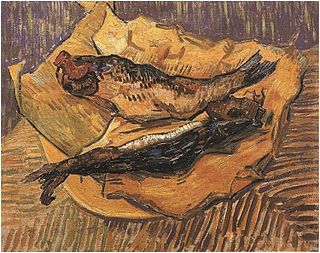 W
WBloaters are a type of whole cold-smoked herring. Bloaters are "salted and lightly smoked without gutting, giving a characteristic slightly gamey flavour" and are particularly associated with Great Yarmouth, England. Popular in the 19th and early 20th centuries, the food is now described as rare. Bloaters are sometimes called Yarmouth bloater, or, jokingly, as a Yarmouth capon, two-eyed steak, or Billingsgate pheasant.
 W
WA buckling is a form of hot-smoked herring similar to the kipper and the bloater. The head and guts are removed but the roe or milt remain. They may be eaten hot or cold.
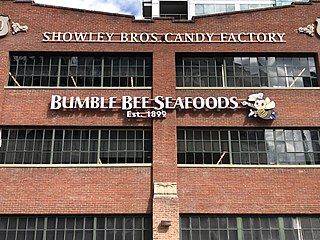 W
WBumble Bee Foods, LLC, is a company that produces canned tuna, salmon, other seafoods, and chicken under the brand names "Bumble Bee," "Wild Selections," "Beach Cliff," "Brunswick," and "Snow's." The company is headquartered in San Diego, California, United States. The brand is marketed as Clover Leaf in Canada. It is owned by FCF Co, Ltd. of Taiwan.
 W
WCakalang fufu is a cured and smoked skipjack tuna clipped on a bamboo frame, a Minahasan delicacy of North Sulawesi, Indonesia.
 W
WCanned or tinned fish are food fish which have been processed, sealed in an airtight container such as a sealed tin can, and subjected to heat. Canning is a method of preserving food, and provides a typical shelf life ranging from one to five years.
 W
WA cannery tender was a type of commercial fishing vessel operated by salmon canneries in the early to mid- 20th century. Most commonly used in the Pacific Northwest and Alaska, cannery tenders transported fish from cannery-owned fish traps to canneries. Cannery tenders also transported men and supplies to set up and maintain the fish traps and patrolled the area around fish traps to protect them from fish pirates.
 W
WCraster kippers are kippers from the Northumberland village of Craster. They have been acclaimed as the best British kipper.
 W
WDried and salted cod, sometimes referred to as salt cod or saltfish or salt dolly, is cod which has been preserved by drying after salting. Cod which has been dried without the addition of salt is stockfish. Salt cod was long a major export of the North Atlantic region, and has become an ingredient of many cuisines around the Atlantic and in the Mediterranean.
 W
WFresh fish rapidly deteriorates unless some way can be found to preserve it. Drying is a method of food preservation that works by removing water from the food, which inhibits the growth of microorganisms. Open air drying using sun and wind has been practiced since ancient times to preserve food. Water is usually removed by evaporation but, in the case of freeze-drying, food is first frozen and then the water is removed by sublimation. Bacteria, yeasts and molds need the water in the food to grow, and drying effectively prevents them from surviving in the food.
 W
WDried shrimp are shrimp that have been sun-dried and shrunk to a thumbnail size. They are used in many East Asian, Southeast Asian and South Asian cuisines, imparting a unique umami taste. A handful of shrimp is generally used for dishes. The flavors of this ingredient are released when allowed to simmer.
 W
WEyemouth is a small town and civil parish in Berwickshire, in the Scottish Borders area of Scotland. It is two miles east of the main north–south A1 road and just eight miles north of Berwick-upon-Tweed. It has a population of about 3,420 people (2004).
 W
WA factory ship, also known as a fish processing vessel, is a large ocean-going vessel with extensive on-board facilities for processing and freezing caught fish or whales. Modern factory ships are automated and enlarged versions of the earlier whalers and their use for fishing has grown dramatically. Some factory ships are equipped to serve as a mother ship.
 W
WA fillet or filet is a boneless cut or slice of meat or fish. The fillet is often a prime ingredient in many cuisines, and many dishes call for a specific type of fillet as one of the ingredients.
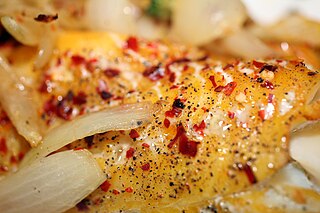 W
WFinnan haddie is cold-smoked haddock, representative of a regional method of smoking with green wood and peat in north-east Scotland. Its origin is the subject of a debate, as some sources attribute the origin to the hamlet of Findon, Aberdeenshire, near Aberdeen, while others insist that the name is a corruption of the village name of Findhorn at the mouth of the River Findhorn in Moray. The "dispute" goes back to the eighteenth century, although it is hard to trace, as adherents fail to acknowledge even the possibility of the alternative view. A testimonial in an early 20th century Boston cookbook describes the origin from a fire in a fish curing house in Portlethen, very near Findon. It may have been a popular dish in Aberdeenshire since at least as early as the 1640s.
 W
WA fish fillet, from the French word filet meaning a thread or strip, is the flesh of a fish which has been cut or sliced away from the bone by cutting lengthwise along one side of the fish parallel to the backbone. In preparation for filleting, any scales on the fish should be removed. The contents of the stomach also need careful detaching from the fillet. Because fish fillets do not contain the larger bones running along the vertebrae, they are often said to be "boneless". However, some species, such as the common carp, have smaller intramuscular bones called pins within the fillet. The skin present on one side may or may not be stripped from the fillet. Butterfly fillets can be produced by cutting the fillets on each side in such a way that they are held together by the flesh and skin of the belly.
 W
WA fish flake is a platform built on poles and spread with boughs for drying cod on the foreshores of fishing villages and small coastal towns in Newfoundland and Nordic countries. Spelling variations for fish flake in Newfoundland include flek, fleyke, fleake, flaik and fleack. The term's first recorded use in connection with fishing appeared in Richard Whitbourne's book Newfoundland. In Norway, a flake is known as a hjell.
 W
WFish preservation is the method of increasing the shelf life of fish and other fish products by applying the principles of different branches of science in order to keep the fish, after it has landed, in a condition wholesome and fit for human consumption. Ancient methods of preserving fish included drying, salting, pickling and smoking. All of these techniques are still used today but the more modern techniques of freezing and canning have taken on a large importance.
 W
WGibbing is the process of preparing salt herring, in which the gills and part of the gullet are removed from the fish, eliminating any bitter taste. The liver and pancreas are left in the fish during the salt-curing process because they release enzymes essential for flavor. The fish is then cured in a barrel with one part salt to 20 herring. Today many variations and local preferences exist in this process.
 W
WThe Gulf of Georgia Cannery is a National Historic Site of Canada located in Steveston village in Richmond, British Columbia.
 W
WHōchōdō is a traditional Japanese culinary art form of filleting a fish or fowl without touching it with one's hands.
 W
WThe Kake Cannery is a historic fish processing facility near Kake, Alaska. Operated by a variety of companies between 1912 and 1977, the cannery was one of many which operated in Southeast Alaska, an area historically rich in salmon. The cannery's surviving buildings are among the best-preserved of the period, and provide a window into the labor practices of the cannery operators, which emphasized production over working conditions, and made significant use of immigrant contract workers. It was declared a National Historic Landmark in 1997.
 W
WA kipper is a whole herring, a small, oily fish, that has been split in a butterfly fashion from tail to head along the dorsal ridge, gutted, salted or pickled, and cold-smoked over smouldering wood chips.
 W
WLofoten Stockfish Museum is located in the village of Å in the municipality of Moskenes, in the Lofoten islands in the county of Nordland, Norway.
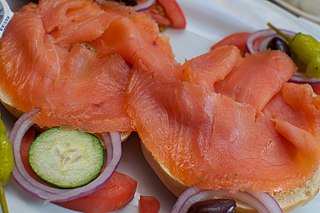 W
WLox is a fillet of brined salmon, that may or may not be smoked. Lox is frequently served on a bagel with cream cheese, and often garnished with tomato, sliced onion, cucumbers, and capers.
 W
WA maguro bōchō , also known as a maguro kiri bōchō is an extremely long, highly specialized Japanese knife that is commonly used fillet tuna, as well as many other types of large ocean fish.
 W
WPumpable ice (PI) technology is a technology to produce and use fluids or secondary refrigerants, also called coolants, with the viscosity of water or jelly and the cooling capacity of ice. Pumpable ice is typically a slurry of ice crystals or particles ranging from 5 micrometers to 1 cm in diameter and transported in brine, seawater, food liquid, or gas bubbles of air, ozone, or carbon dioxide.
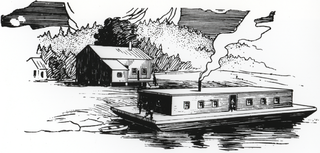 W
WA salmon cannery is a factory that commercially cans salmon. It is a fish-processing industry that became established on the Pacific coast of North America during the 19th century, and subsequently expanded to other parts of the world that had easy access to salmon.
 W
WSamuel Elmore Cannery was a U.S. National Historic Landmark in Astoria, Oregon that was designated in 1966 but was delisted in 1993.
 W
WThe short mackerel or shortbodied mackerel is a species of mackerel in the family Scombridae. Its habitat is the shallow waters of Southeast Asia and Melanesia, feeding mainly on small zooplankton. It is of major importance to the fisheries industry.
 W
WSlurry ice is a phase changing refrigerant made up of millions of ice "micro-crystals" formed and suspended within a solution of water and a freezing point depressant. Some compounds used in the field are salt, ethylene glycol, propylene glycol, alcohols like isobutyl and ethanol, and sugars like sucrose and glucose. Slurry ice has greater heat absorption compared to single phase refrigerants like brine, because the melting enthalpy of the ice is also used.
 W
WStockfish is unsalted fish, especially cod, dried by cold air and wind on wooden racks on the foreshore. The drying of food is the world's oldest known preservation method, and dried fish has a storage life of several years. The method is cheap and effective in suitable climates; the work can be done by the fisherman and family, and the resulting product is easily transported to market.
 W
WSurströmming is a lightly-salted fermented Baltic Sea herring traditional to Swedish cuisine since at least the 16th century.